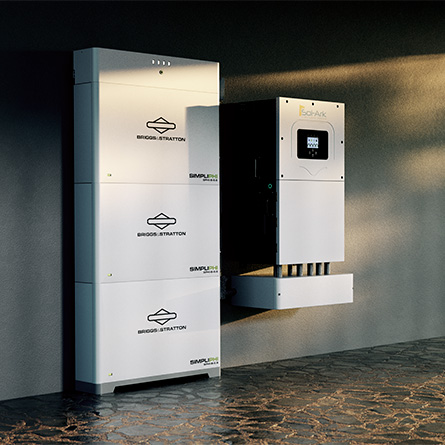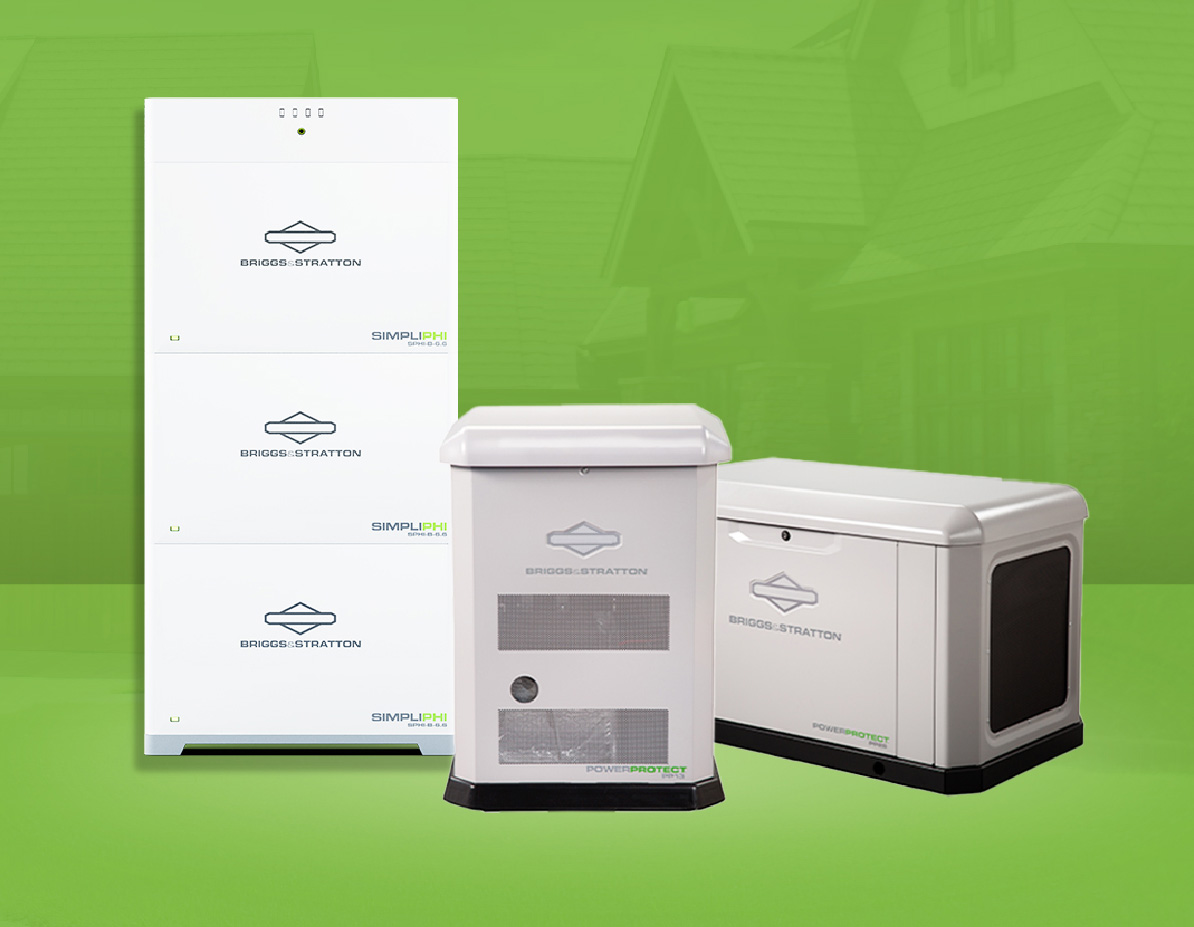What's Best for You?
84% of Americans are concerned about growing power outages, according to a consumer power report survey by Goal Zero. Backup power systems supply energy seamlessly when the primary source fails; even more importantly, they keep power running for urgent needs such as medical devices and emergency communications. Having a backup power system is becoming more important for various reasons across the U.S. As more people work from home, there’s less room for error when it comes to our power supply. Having an uninterruptible power supply is critical for commercial and residential functions. Batteries and backup generators are powerful tools to navigate an uncertain grid energy road ahead.
Climate change is already intensifying the severity of natural disasters across the U.S., with projections indicating even more pronounced impacts in the future. Given this evolving threat, resilience and preparedness are crucial. Resilience encompasses forecasting potential disasters, strategic planning, and risk mitigation, all aimed at safeguarding our families and communities. Disaster preparedness, a proactive approach to handling unexpected events, can save lives and economic resources while expediting the recovery processes and diminishing potential long-term effects that disasters can have on individuals and communities.
LFP Batteries & Standby Generators
Lithium Ferrous Phosphate Batteries, or “LFP,” are emerging as the go-to safe battery storage system that consists of three essential components, a cathode, an anode, and an electrode, making it more stable and less prone to overheating issues than lithium-ion batteries. The ions in Lithium batteries move between negative and positive electrodes to charge and discharge. LFPs are the types of batteries we will be discussing in this review of batteries and generators.
Standby generators convert mechanical energy gained from an external source like natural gas to electrical energy that is used to power a home. Generators work as an electrical conductor, such as a wire carrying electric charges that create a flow. The movement of the wire or electrical conductor creates a voltage difference between its two ends, which prompts the flow of electricity. There are various fuel options for standby generators, such as diesel, propane, and natural gas. The power rating on generators is typically based on propane, even though 70% of U.S. homes have access to natural gas. Briggs & Stratton’s proprietary NGMax™ technology delivers maximum output power on natural gas as well, a huge win for generator owners.
Advantages of a Battery Storage System and a Generator
Battery Storage devices are becoming increasingly essential in bridging the gap between renewable energy sources and meeting the demand for electricity. Battery Storage technology allows energy from renewable sources such as solar and wind, or energy from the grid or a generator, to be stored and released when needed. Scheduled rolling blackouts occur when the utility company turns off the electricity to save power when the grid is stretched to capacity. In these shorter-term incidences, battery storage can be highly beneficial for keeping the lights on.
Longer-term outages can result in significant damage to local economies as well as human lives. In these instances, an interruption in electricity has occurred for more than 24 hours. In these circumstances, generators offer several advantages above a battery, such as a reliable backup power source, as they can be refueled quite easily. Generators are considered an important component of emergency and disaster preparedness because they can run longer than a battery storage system cycle, which is preferred for shorter-term outages.
Comparing Costs of Battery Storage vs. a Generator
Battery Storage Costs
Typically, the cost differs depending on the manufacturer, power capacity, battery type, and other factors. The initial cost and installation of a battery storage system range from $10,000 to $20,000. However, depending on your local rebates and tax credit incentives, this cost can be driven down. In some cases, the cost can be eliminated, such as the SGIP program in California and the additional 20% discount on batteries manufactured in California, like Briggs & Stratton. Upfront cost, energy savings, tax incentives, and rebates are some factors to consider when calculating the ROI of a particular battery storage system.
Generator Costs
The price of a standby generator can range from anywhere between $4,000 to $25,000, depending on the size, fuel type, and brand. An average standby generator costs $9000, including installation. Depending upon the generator capacity and your energy consumption, whole house generator fuel costs can range from $50-$150 per day and upwards for commercial and industrial outfits. Generators can save businesses and homeowners money by preventing downtime during power outages. When calculating the ROI of generators, initial costs, environmental benefits, and operational costs are to be considered.
Comparing Emissions
Battery Storage
LFP battery storage systems do not produce carbon emissions during operation. However, the environmental impact of these systems hinges largely on their charging source. When charged using renewable sources such as solar or wind, the entire system operates without carbon emissions. Conversely, if the battery draws power from the grid or a generator, the carbon footprint is potentially larger.
LFP batteries stand out for their environmental benefits: they are lightweight, versatile, non-toxic, and lack harmful metals like nickel and cobalt commonly found in other lithium-ion batteries, making them easier to recycle.
Generator
Standby generators offer a reliable backup for power supply but come with environmental considerations. Among the different fossil fuels, natural gas burns the cleanest, releasing fewer pollutants into the air. However, generators, in general, can contribute to noise and air pollution, thereby increasing one's carbon footprint. The combustion of fossil fuels in generators releases carbon dioxide and other greenhouse gases, aggravating air pollution. Nonetheless, due to their comparatively lower CO2 emissions and decreased release of harmful pollutants, natural gas generators remain a preferable option over other fuel sources for generators.
Maintenance
Battery Storage
Batteries are very low maintenance. To ensure the best performance and lifespan of your LFP battery, it should be stored in a location where it can be charged between 32° to 120°F (0° to 49°C). LFP batteries can handle short-term temperature changes; however, prolonged exposure to extreme temperatures may cause damage, so they should remain between -4 ° to 140°F (-20 ° to 60°C).
Generator
To keep your generator operating smoothly, it is essential to perform maintenance tasks to avoid breakdowns and increase its lifespan. These tasks include changing the oil, oil filter, and spark plugs. Most home standby generators have a weekly test cycle that runs from 5-20 minutes. PowerProtect generators are designed with Eco-Cise™ smart weekly test that shrinks the weekly test from minutes down to just 16 seconds, dramatically reducing fuel consumption and noise. Keep a check on wiring and electrical systems and change spark plugs. For DIY maintenance, you can purchase a maintenance kit, or if you’d rather partner with an expert for support, you can locate a trained Briggs & Stratton authorized dealer for scheduled generator maintenance.
Lifespan
Battery Storage
LFP batteries tend to outperform lithium-ion batteries and offer uncompromised safety. Like the Briggs & Stratton line of lithium-iron batteries which are rated safe by FDNY. LFP batteries are less vulnerable to thermal runaway and combustion, making them safe for use at home. LFP batteries have longer life cycles than lithium-ion batteries. With proper use and storage, batteries can last longer, anywhere from 3,500 to over 4,000 cycles. Briggs & Stratton's new line of battery packages has a lifespan of over 10,000 cycles and a depth of discharge of 80%, which means you can use up to 80% of your battery’s total rated capacity.
Generator
Keeping all components in optimal condition and proper maintenance can increase the generator's lifespan. Scheduled inspections, battery maintenance, fluid changes, and load bank testing can extend the lifespan anywhere from 10,000 to 30,000 hours of operation and 25-35 years.
Operational Noise
Battery Storage
LFP batteries are known for their low noise levels. Studies on LFP noise levels show a short burst of noise, which consists of an abrupt transition between two or more levels.
Generator
Generators produce sound levels typically ranging from 50 to 80 decibels, and even high-end models can be notably loud because of the internal combustion engines. For context, 50 decibels is comparable to the sound of a quiet refrigerator; 80 decibels is akin to the noise from a garbage disposal.
Space & Location
Battery Storage
LFP battery storage systems can be installed both indoors and outdoors and are a safer alternative to lithium-ion batteries, which makes them suitable for indoor placement, whether in sheds, garages, or residential spaces. Additionally, the absence of harmful chemicals and heavy metals in their composition ensures safer handling during their lifecycle and when it comes time to recycle them.
Generator
Generators should be used outdoors with proper ventilation for efficiency and safety. Beyond local or federal guidelines, there are universal best practices homeowners should adhere to when dealing with generators. Typically, manufacturers recommend situating the generator outdoors, ensuring it's positioned a minimum of five feet away from doors, windows, vents, and any combustible materials.
Ease of Use
Battery Storage
The operating principle of battery storage is very simple. It receives electricity from a renewable energy source, such as solar panels, wind, or a power grid, and stores it as current, releasing it when needed. Control components of the battery storage system ensure the setup is smooth and performs efficiently without any ongoing user intervention. Monitoring apps make batteries easy to manage and oversee.
Generator
After a professional installation, operating a natural gas generator is very straightforward. Should there be a power outage, the generator senses the interruption and springs into action automatically. Within seconds, it restores power to your home, allowing you to continue your activities seamlessly.
Energy Source
Battery Storage
A battery storage system is great because it can be charged by the grid, solar, wind, or generator, depending on your particular power circumstances. This system uses an algorithm to coordinate energy production, and a computerized control system decides when to store or release energy to the grid.
Generator
Standby generators rely on a good fuel supply, and many in the U.S. are powered by natural gas, diesel, or propane. Natural gas generators are the most common and are easier to maintain than other types.
7 Advantages of Combining Battery Storage and Generators
You don’t have to choose between a battery and a generator. In some cases, it may make sense for you to combine them for optimal energy backup. Battery and generator hybrid systems present a compelling solution for bolstering power resilience. By seamlessly integrating these two technologies, users can expect strengthened resilience, ensuring continuous power even during unexpected disruptions. Combining the two can facilitate optimized peak shaving, provide robust emergency backup during prolonged outages, and enhance power flexibility. This makes power more affordable and reliable. Here are 7 value adds of hybridizing your backup energy system.
Energy arbitrage - The practice of storing energy when prices are low and selling or using it when prices are high, maximizing economic benefits through a hybrid system.
Increased resilience - Both batteries and generators bolster defense against power disruptions.
Emergency backup power - Generators provide longer-term power for essential devices.
Solution for prolonged outages - For extended blackouts, the combination ensures continuous power that works more effectively together.
Flexibility - Batteries are ideal for regions with frequent outages and offer financial incentives and rebates.
Combination of power sources - Merging gas generators with batteries ensures diverse emergency power options.
Affordability - Solar battery costs are decreasing, making them more accessible.
Battery vs. Generator, what's best for you? It depends.
Before deciding whether to invest in a battery storage system or a generator, ask yourself a few questions, such as:
What are my power needs and goals?
Do I experience long periods without power or short-planned rolling blackouts?
Am I more concerned about environmental impact or continuous power?
How much am I willing to invest upfront vs. over time?
Consulting with an energy expert and answering some basic questions about your energy needs will help you determine if battery storage, a generator, or both are best for your home or business.


Ready to experience true energy independence?
Request a consultation with a Briggs & Stratton dealer or installer near you by clicking the button below.




